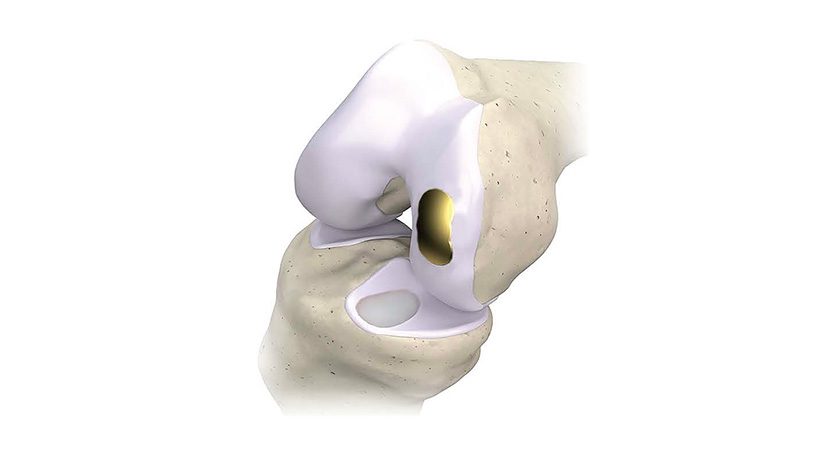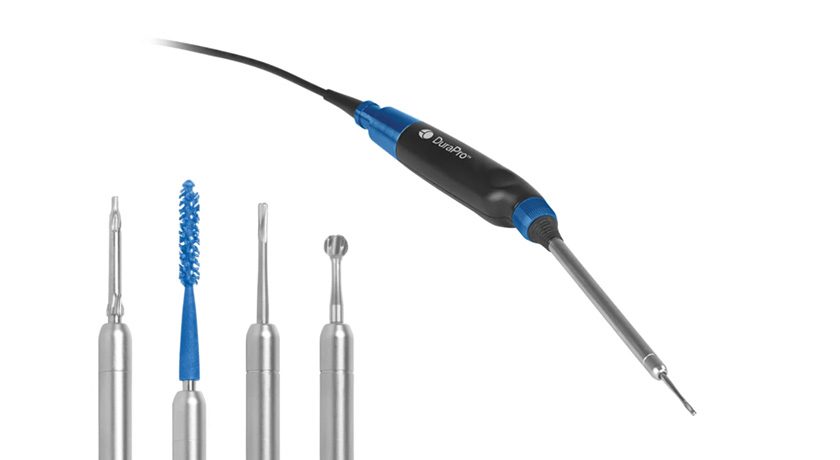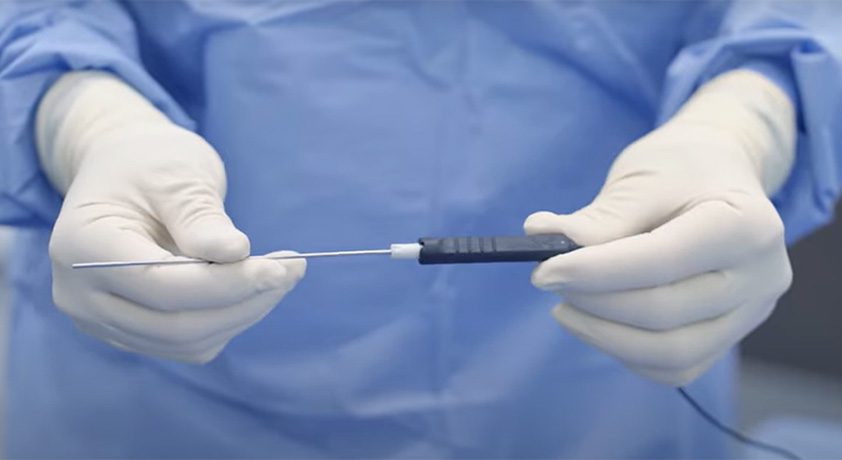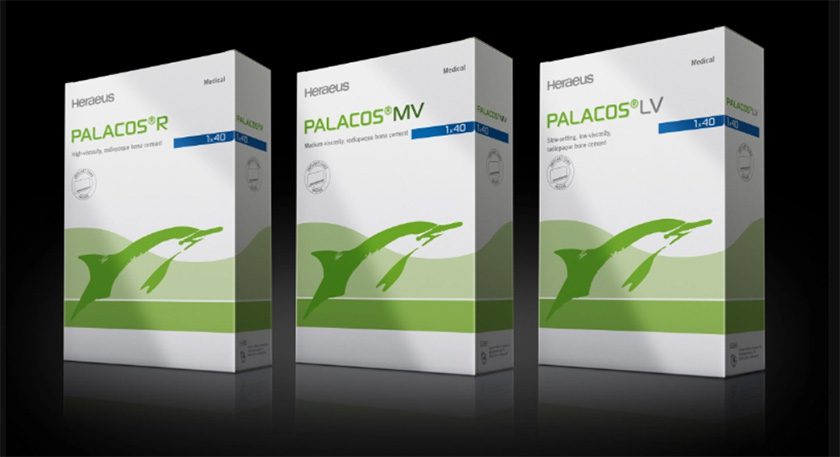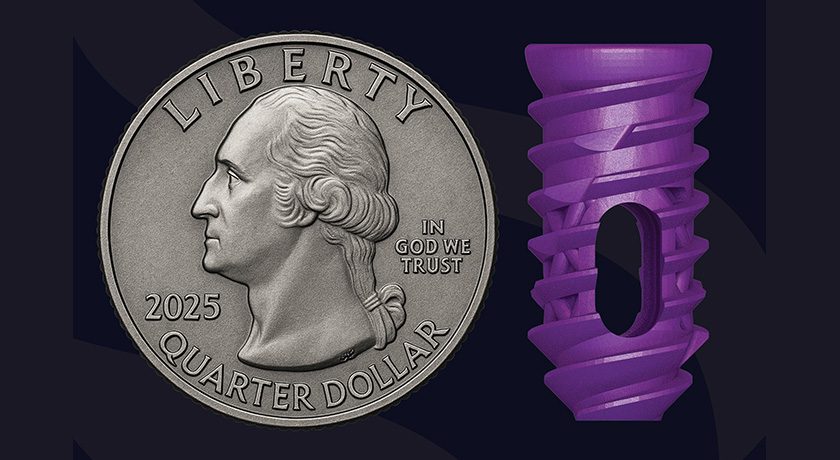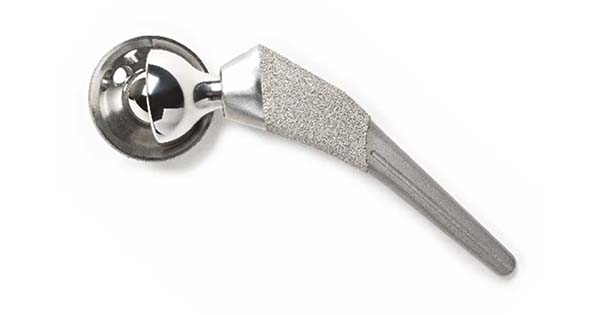

 Copy to clipboard
Copy to clipboard 
Hip Innovation Technology announced FDA approval of its Reverse Hip Replacement System (Reverse HRS) for Compassionate Use in a patient with spinal fusion.
Published results indicate that currently-available hip systems are not well suited for patients with previous spinal fusion, who may experience significantly increased risk of dislocation due to alteration of the spinal pelvic mechanics. This alteration in biomechanics is not fully addressed by currently available conventional or dual mobility hip arthroplasty systems. Further reports suggest that when compared to patients without lumbar fusion, patients with lumbar fusion demonstrated an 80% increase in dislocation at six months, 71% at one year and 60% at two years.
There was also a 48% increased risk of any failure leading to revision hip surgery in patients with lumbar fusion at six months, 41% at one year, and 47% of two years.
The Reverse HRS is a Metal-on-Polyethylene reverse geometry hip prosthesis designed to improve stability at extended ranges of motion and reduce the risk of dislocation. Like most conventional systems, the Reverse HRS consists of a femoral stem, an acetabular cup and a cobalt-chrome ball that articulates within a polyethylene liner.
Unlike existing total hip replacement systems, the ball is placed on a trunnion within the acetabular cup instead of the femoral stem, and the polyethylene liner is attached to a femoral cup, which then attaches to the femoral stem, as opposed to the polyethylene liner being attached to the acetabular cup. This technological difference does not change the center of rotation of the Reverse HRS and it remains similar to a normal physiological hip, or a well-positioned traditional Total Hip Arthroplasty.
The advanced Reverse HRS implant is designed to provide greater range of motion in all planes, enhanced hip stability, and to reduce the risk of dislocation. Importantly, the Reverse HRS also provides variability of component placement including higher abduction angles and anteversion of the acetabular cup. The femoral cup articulates around the acetabular ball and overlaps with the acetabular cup as the hip undergoes flexion-extension, abduction-adduction and internal-external rotation.
This design may compensate for suboptimal component positioning, which may provide benefits such as extended range of motion, hip stability and reduced likelihood of impingement. The Reverse HRS is designed to uncouple the relationship between component placement, wear and stability. This unique implant design of the Reverse HRS provides optimal surface area contact between the acetabular ball and femoral cup, which may eliminate edge loading. Elimination of edge loading may provide benefits that include reduced high-contact stresses, decreased implant wear and uniform wear, which minimizes generation of wear debris and associated concerns related to osteolysis.
“We are thankful for the FDA’s compassionate use provision for our Reverse Hip Replacement System,” said George Diamantoni, CEO, Hip Innovation Technology. “The data collected from these cases may help expand the existing literature, offering a potential new option for patients with spinal fusion and spinal pelvic disorders. Our hope is to provide these patients with a new option that could enable them to experience a lower risk of dislocation and improved outcomes with the Reverse HRS.”
Source: Hip Innovation Technology, LLC
Hip Innovation Technology announced FDA approval of its Reverse Hip Replacement System (Reverse HRS) for Compassionate Use in a patient with spinal fusion.
Published results indicate that currently-available hip systems are not well suited for patients with previous spinal fusion, who may experience significantly increased risk of...
Hip Innovation Technology announced FDA approval of its Reverse Hip Replacement System (Reverse HRS) for Compassionate Use in a patient with spinal fusion.
Published results indicate that currently-available hip systems are not well suited for patients with previous spinal fusion, who may experience significantly increased risk of dislocation due to alteration of the spinal pelvic mechanics. This alteration in biomechanics is not fully addressed by currently available conventional or dual mobility hip arthroplasty systems. Further reports suggest that when compared to patients without lumbar fusion, patients with lumbar fusion demonstrated an 80% increase in dislocation at six months, 71% at one year and 60% at two years.
There was also a 48% increased risk of any failure leading to revision hip surgery in patients with lumbar fusion at six months, 41% at one year, and 47% of two years.
The Reverse HRS is a Metal-on-Polyethylene reverse geometry hip prosthesis designed to improve stability at extended ranges of motion and reduce the risk of dislocation. Like most conventional systems, the Reverse HRS consists of a femoral stem, an acetabular cup and a cobalt-chrome ball that articulates within a polyethylene liner.
Unlike existing total hip replacement systems, the ball is placed on a trunnion within the acetabular cup instead of the femoral stem, and the polyethylene liner is attached to a femoral cup, which then attaches to the femoral stem, as opposed to the polyethylene liner being attached to the acetabular cup. This technological difference does not change the center of rotation of the Reverse HRS and it remains similar to a normal physiological hip, or a well-positioned traditional Total Hip Arthroplasty.
The advanced Reverse HRS implant is designed to provide greater range of motion in all planes, enhanced hip stability, and to reduce the risk of dislocation. Importantly, the Reverse HRS also provides variability of component placement including higher abduction angles and anteversion of the acetabular cup. The femoral cup articulates around the acetabular ball and overlaps with the acetabular cup as the hip undergoes flexion-extension, abduction-adduction and internal-external rotation.
This design may compensate for suboptimal component positioning, which may provide benefits such as extended range of motion, hip stability and reduced likelihood of impingement. The Reverse HRS is designed to uncouple the relationship between component placement, wear and stability. This unique implant design of the Reverse HRS provides optimal surface area contact between the acetabular ball and femoral cup, which may eliminate edge loading. Elimination of edge loading may provide benefits that include reduced high-contact stresses, decreased implant wear and uniform wear, which minimizes generation of wear debris and associated concerns related to osteolysis.
“We are thankful for the FDA’s compassionate use provision for our Reverse Hip Replacement System,” said George Diamantoni, CEO, Hip Innovation Technology. “The data collected from these cases may help expand the existing literature, offering a potential new option for patients with spinal fusion and spinal pelvic disorders. Our hope is to provide these patients with a new option that could enable them to experience a lower risk of dislocation and improved outcomes with the Reverse HRS.”
Source: Hip Innovation Technology, LLC

You are out of free articles for this month
Subscribe as a Guest for $0 and unlock a total of 5 articles per month.
You are out of five articles for this month
Subscribe as an Executive Member for access to unlimited articles, THE ORTHOPAEDIC INDUSTRY ANNUAL REPORT and more.
JV
Julie Vetalice is ORTHOWORLD's Editorial Assistant. She has covered the orthopedic industry for over 20 years, having joined the company in 1999.


